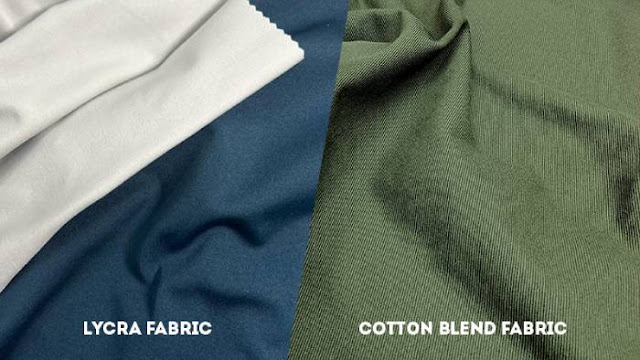Featured
- Get link
- X
- Other Apps
Fashion Influencers and Social Media's

Impact on American Style:
Fashion influencers and the power of social media platforms
like Instagram, TikTok, and YouTube have had a profound impact on shaping
American fashion trends. These digital tastemakers have transformed the fashion
landscape by collaborating with brands, showcasing their personal style, and
influencing consumer choices. Additionally, they have played a significant role
in democratizing fashion through user-generated content and the spread of viral
fashion challenges and trends.
The Rise of Fashion Influencers:
Fashion influencers, often individuals who have gained a
substantial following on social media platforms due to their unique sense of
style, have become central figures in the fashion world. They provide
inspiration and guidance to their followers and have the ability to sway
consumer preferences. Here are some key aspects of their rise:
Diverse Styles and Identities: Fashion influencers come from
various backgrounds, ethnicities, and gender identities, representing a broad
spectrum of styles and tastes. This diversity allows them to connect with a
wide range of followers.
Authenticity and Relatability: Many influencers are admired
for their authenticity and relatability. They often share their personal
fashion journeys, showing that fashion is accessible to anyone and can be a
form of self-expression.
Digital Storytellers: Influencers are skilled at using
storytelling to engage their audience. They share not only outfit photos but
also narratives about their fashion choices, creating a deeper connection with
followers.
Collaboration with Brands:
Fashion influencers are increasingly partnering with brands
in various ways, including sponsored content, collaborations, and brand
ambassadorships:
Sponsored Content: Brands pay influencers to promote their
products or clothing lines on social media platforms. This is often done
through sponsored posts, stories, or dedicated campaigns.
Collaborations: Many influencers collaborate with fashion
brands to create limited-edition collections or individual pieces. These
collaborations leverage the influencer's personal style and following to boost
brand visibility.
Brand Ambassadorships: Influencers may become brand
ambassadors, representing a brand for an extended period. This involves a
deeper partnership and often includes attending events, providing input on
design, and promoting the brand's values.
Social Media Platforms as Fashion Hubs:
Social media platforms have become virtual runways, with
influencers leading the way in showcasing the latest trends:
Instagram: Instagram is a visual platform that thrives on
fashion content. Influencers post outfit-of-the-day photos, fashion
inspiration, and style tips. Instagram's shopping features also allow users to
purchase directly from the app.
TikTok: TikTok's short video format has given rise to quick
and engaging fashion content. Fashion influencers use TikTok to share styling
tips, trends, and even create viral fashion challenges like the "outfit
change" challenge.
YouTube: YouTube offers longer-form content where
influencers can create in-depth fashion lookbooks, tutorials, and reviews. It
allows for a more detailed exploration of fashion topics and styles.
Democratization of Fashion:
Fashion influencers have played a pivotal role in
democratizing fashion by breaking down traditional barriers:
Inclusivity: Influencers of different body sizes, gender
identities, and backgrounds challenge narrow beauty standards and promote
inclusivity in the fashion world.
Accessible Fashion: Influencers often showcase affordable
and accessible fashion options, making style inspiration available to a broader
audience.
Support for Small Brands: Influencers can boost the
visibility of emerging and independent fashion brands, helping them compete
with larger, established players.
Impact of Viral Challenges and Trends:
Viral challenges and trends, often initiated by influencers,
have a direct impact on the American fashion landscape:
Fast Dissemination: Trends can spread rapidly through social
media platforms, with users creating their interpretations and contributing to
the trend's popularity.
Retail Sales: Viral fashion trends often lead to increased
sales for specific items or styles. For example, a popular TikTok video
featuring a specific clothing item can lead to a surge in demand for that
product.
Sustainability Awareness: Challenges and trends can also
raise awareness about sustainable fashion practices. Influencers may promote
thrifting, upcycling, or ethical brands through viral content.
Cultural and Social Commentary: Some fashion challenges and
trends serve as platforms for commentary on cultural and social issues,
reinforcing the idea that fashion can be a means of self-expression and social
activism.
The Future of Fashion Influence:
The influence of fashion influencers and social media is
expected to continue evolving in the future:
Rise of Niche Influencers: Smaller, niche influencers with
highly engaged followers may gain prominence as consumers seek more authentic
and relatable content.
Increased Focus on Sustainability: Influencers will likely
place more emphasis on sustainable fashion choices and encourage their
followers to adopt eco-friendly practices.
Virtual Fashion and Digital Avatars: As digital fashion
gains traction, influencers may explore virtual fashion and the creation of
digital avatars with unique styles.
Fashion Beyond Clothing: Fashion influencers may expand
their focus to include beauty, skincare, and wellness, offering a holistic
approach to personal style and self-care.
In conclusion, fashion influencers and social media have
revolutionized American fashion, making it more inclusive, accessible, and
responsive to consumer preferences. These digital tastemakers continue to shape
trends, challenge industry norms, and provide a platform for self-expression
and creativity. As the fashion landscape continues to evolve, influencers will
play a central role in shaping the industry's future direction.
- Get link
- X
- Other Apps
Popular Posts
Difference between Lycra and cotton Lycra
- Get link
- X
- Other Apps
